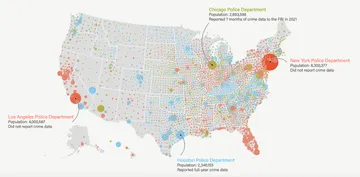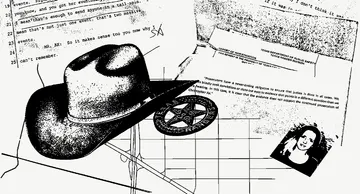There are no national reporting requirements that track arrests or prosecutions under state laws that criminalize people living with HIV.
Until recently, it wasn’t clear how frequently people were arrested or prosecuted under six Ohio laws that criminalize certain acts – including sex – or substantially increase the penalties. Some of the laws also apply to people with hepatitis or tuberculosis.
Research released by the Ohio Health Modernization Movement and Equality Ohio, two groups pushing for the laws to be reformed, identified 214 cases prosecuted in Ohio during a six-year-period ending in 2020. The information came from court dockets, clerks and prosecutors in Ohio’s 88 counties. That number is likely lower than the actual number of cases prosecuted. Not all counties included detailed enough information on the charges, some cases weren’t counted.
What are Ohio’s six laws that criminalize living with HIV?
Ohio law considers it a type of felonious assault to have sexual contact with another person without telling them if you have HIV, hepatitis or tuberculosis. This crime can be prosecuted regardless of whether the virus was transmitted or protection, such as condoms, were used. It doesn’t matter if the person had an undetectable level of virus in their blood and was unable to transmit HIV.
It is also illegal to harass a person with a bodily substance, including blood, saliva, feces, urine or semen. The penalties increase for a person with HIV.
Soliciting sex, selling sex or loitering in an area with the intent to sell sex are all illegal and have increased penalties for people living with HIV.
Selling or donating blood or plasma if you have HIV is also against the law.
Where in Ohio are the most cases prosecuted?
Researchers found the most prosecutions in places with the highest populations. That includes: Cuyahoga, Hamilton, Franklin and Lucas counties.
Cuyahoga County charged four times the number of cases under the six laws than Franklin County, which has a higher population and more people living with HIV and AIDS.
- 26% in Cuyahoga County
- 12% in Hamilton County
- 7% in Lucas County
- 7% in Franklin County
- 5% each for Montgomery and Warren counties
The Marshall Project looked at 36 Cuyahoga County prosecutions from 2016 through 2022. The cases involved 18 law enforcement agencies, including three hospital police departments and public transit police. More than a third of the cases were for not disclosing an HIV status. Just under a third were for “harassment by inmate” which the prosecutor’s office said included cases involving hepatitis and not just HIV.
How many people in Ohio have had an HIV diagnosis?
In 2022, about 25,000 people in Ohio were living with HIV, according to the state’s health department. The rate of Black residents diagnosed with HIV was more than six times the rate of white residents.
In Cleveland, new HIV diagnoses rose by 6% between 2017 and 2021.
What types of cases were prosecuted most often?
More than half – 56% – of the cases identified were for “harassment” with a bodily substance, such as saliva, urine, feces or blood.
A third of the cases – 36% – were for “felonious assault,” which carries the most severe penalty of any HIV-related charge. The rest – 8% – were cases involving sex work. Researchers didn’t find prosecutions for selling or donating contaminated blood
How do Ohio laws increase penalties for people living with HIV compared to those who do not have the virus?
Penalties for individuals living with HIV can be anywhere from two to 29 times longer than those for people who are HIV-negative.
Harassment with a bodily substance charges carry a penalty of up to 5 years in prison and a $10,000 fine. That range is 1 to 6 times greater than for a person who does not have HIV. The potential fine is three times greater.
Felonious assault for not disclosing an HIV-positive status carries a minimum penalty of 2 to 8 years and up to 12 years in prison and a $15,000 fine. A person may also be required to registered as a sex offender. This penalty doesn’t exist for a person without HIV.
Prostitution without disclosing HIV status carries a penalty of 1-3 years in prison and a $10,000 fine. That range is 6 to18 times greater than for a person who does not have HIV. The fine is 19 times greater.
Soliciting without disclosing HIV status carries a penalty of 1-3 years in prison and a $10,000 fine. That range is 6 to18 times greater than for a person who does not have HIV. The fine is 19 times greater.
Loitering while intending to sell sex while HIV positive carries a penalty 6-12 months in prison and a $2,500 fine. That range is 2 to 5 times greater. The fine is four times greater.
How are historically marginalized groups affected by HIV-related prosecutions?
Court records lack or have conflicting information on race or ethnicity. The sex captured in law enforcement records does not always accurately capture a person’s gender identity. Records also don’t include whether a person is identified as an LGBTQ+.
That prevents a full understanding of how the laws impact people of color and LGBTQ+ people. However, there is a significant racial disparity between people charged under HIV criminalization statutes when compared to the general population.
Of people prosecuted in Ohio, 35.9% of defendants were identified as Black. The 2020 U.S. Census identified 12.5% of people as Black.
A separate report from the Williams Institute based at UCLA, looked at arrests under Ohio’s six laws over a 22-year span. The institute does legal and public policy research on sexual orientation and gender identity.
It found that:
- Women were over-represented in HIV-related arrests: 48% of people arrested, but only 21% of people living with HIV in Ohio.
- Black people were 44% of people arrested for allegations of an HIV-related offense in Ohio, but made up 13% of the state population and 44% of people living with HIV in Ohio.

